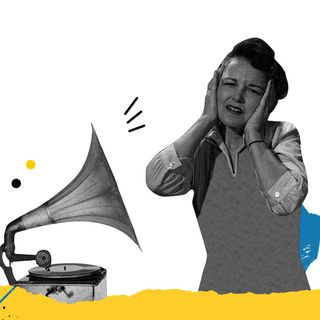
Only Calm, Happy Women Are Thought to Be Better Leaders Than Men, Research Shows
Men get more leeway to express negative emotions as people use implicit biases when evaluating leaders, researchers note.

Self-help and leadership books agree on a template of an efficient leader: practical, confident, inspiring. And more often than not, this template is associated with a man, with women being labelled “too emotional.” A new study analyzed what emotional expressions in particular are linked to efficiency, and which work in women’s favor in particular.
The consensus was that women who exhibit positive emotions like cheerfulness and calmness were believed to be efficient leaders — better than men. In other terms, women had to keep negative emotions like anger or fear at bay if they wanted to be perceived as good leaders.
The findings, published in the Journal of Organizational Behavior last month, thus offer a new twist to preexisting ideas about perception of gender identity at work. Theories of what emotions in leaders affect our implicit biases have been researched before, with scientists agreeing on some emotions that negatively affect our judgment of a leader. An effective leader is perceived to be intelligent and charismatic; and yes, men are thought to possess more of these qualities than women due to social biases.
In the present study, the researchers focused on what emotional prototypes in leaders people responded to. Based on a survey, they identified six key emotions under the two subsets of “effective” and “ineffective” leadership. Three of them — cheerfulness, calmness, pride — were associated with the former; while anger, fear, remorse signaled weak leadership.
“What was surprising in our research is that women were rated more effective, and this could be explained by implicit theories of leadership emotions,” Thomas Sy, a psychology professor at UC Riverside, co-author of the study, noted.
Interestingly, while men and women who express negative emotions were thought to be ineffective leaders, the researchers noted that men get more leeway for engaging in these behavior. This isn’t particularly striking — the trope of the “hysterical” woman who leads with their “hearts” has existed as a potent tool of sexism and patriarchy, hurting everyone on the gender spectrum.
Related on The Swaddle:
Stoicism Has Become a Masculine Ideal That Values Repression, Indifference. What Could Go Wrong?
“Expressing emotion is a very feminine trait, and I think traditionally women have hidden their emotions because they’ve bought into an ‘act like a man’ mentality in business,” an article in w2.0 noted. This is true for people identifying with any gender: we tend to associate strength and efficiency with people who show no emotions, or only positive emotions, stigmatizing any mental health concern at the workplace.
Arguably, there’s a line between emotions and practical decisions at work. Anything in extreme — anger or fear — undermines work output. But how they are perceived is telling of our biases: the idea that only “unemotional” women, or those who disassociate themselves with hysterics, will be taken seriously signals a glaring gender gap in work.
But it is a zero-sum game for women, who may face professional difficulties for being both unemotional and too emotional. While “female leaders can be penalized for even minor or moderate displays of emotion, especially when the emotion conveys dominance (e.g., anger or pride), but being emotionally unexpressive may also result in penalties because unemotional women are seen as failing to fulfill their warm, communal role as women,” a 2016 research noted.
The polarizing perceptions are more deleterious in professional settings, where stereotypes against women, and the mere association with something feminine, keeps them from management roles and affect how their work is perceived.“We’re considered to be difficult when we get angry, whereas men are perceived as being tough and powerful,” Denise Dudley, author of “Work It! Get In, Get Noticed, Get Promoted,” noted in an article.
“Every role has emotions that must be expressed, including leaders. To be effective, leaders must perform emotional labor,” Sy said. Good leaders get emotional, most experts will tell you, but the implicit biases place an asterisk to this understanding: good leaders get emotional, but when they are women and showing “feminine” emotions at workplace, they may not really be good leaders.
But arguably, even emotional perception is gendered and efforts must be made to counter our implicit biases rather than encouraging a culture where women, and others, should be penalized for expressing fear or remorse. While so far, the burden has always been on women to be conscious of their emotional bandwidth, a concerted effort needs to be made to normalize “healthy” emotions across genders.
Saumya Kalia is an Associate Editor at The Swaddle. Her journalism and writing explore issues of social justice, digital sub-cultures, media ecosystem, literature, and memory as they cut across socio-cultural periods. You can reach her at @Saumya_Kalia.
Related


Two‑Thirds of People Globally Prefer ‘Flexible’ Work Options After Covid19: Survey
